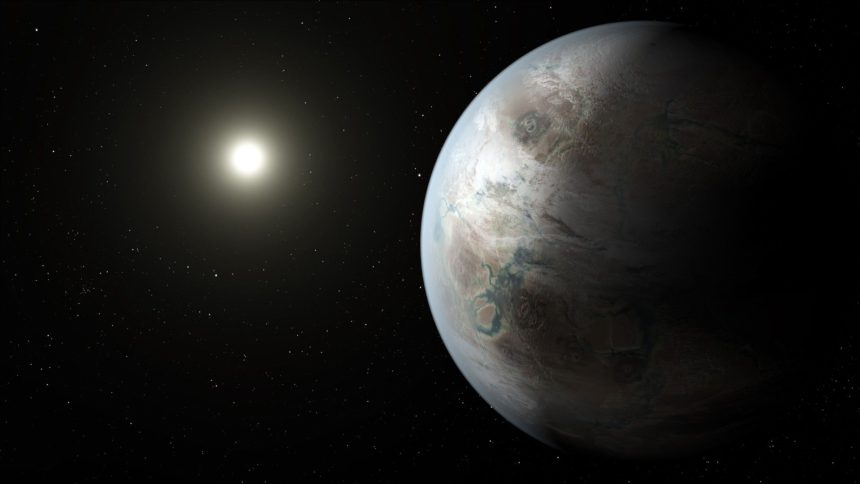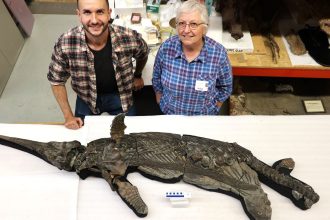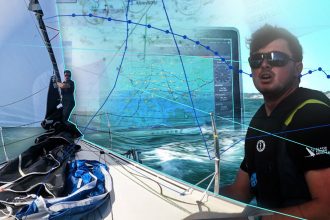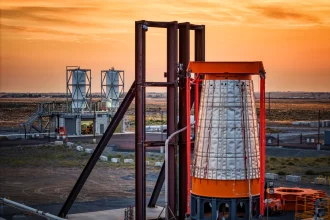With the number of exoplanets having recently passed the 6,000 mark, astronomers are busy preparing for many thousands more in the coming years, with underutilized planet-finding techniques about to come to the fore to add the deluge from transit surveys.
“We’ve found 6,000 planets, but none of them are like Earth,” said Aurora Kesseli, an astronomer at Caltech who works on NASA’s Exoplanet Archive keeping a tally of the worlds already discovered, in an interview with Space.com. “So when people ask why we are still looking for exoplanets when we have found 6,000 of them, it’s because we haven’t found an Earth-like planet yet. But there are a lot of the upcoming missions that are really tuned-in to try and find something that actually looks like Earth.”
Several new planet-finding missions are on the cusp of being launched. First to go into space will be the European Space Agency’s PLATO (PLAnetary Transits and Oscillations of stars), currently set to launch in December 2026 on a mission to search for the transits of planets including rocky, Earth-sized worlds in the habitable zone of their star.
You may like
A year later, NASA’s Nancy Grace Roman Space Telescope will blast off for the L2 Lagrange point alongside PLATO and the James Webb Space Telescope (JWST). Although a multi-purpose space telescope, it will hunt for planets made visible by gravitational microlensing.
Then, in 2028, the China National Space Administration plans to launch the Earth 2.0 mission, which will also head to the Lagrange 2 point to search for planetary transits of Earth-like planets around sun-like stars.
With all three missions on the go at the same, and with NASA’s TESS (Transiting Exoplanet Survey Satellite) still in operation, there will soon be a flood of new exoplanet discoveries, and Kesseli and her colleagues at the Exoplanet Archive are going to have to figure out how to collate all the data.
“The challenge for the Archive is definitely going to be handling the sheer numbers of exoplanets still to come, from PLATO, from Earth 2.0, from NASA’s Roman Space Telescope,” she said. “We’re expecting on the order of 100,000 transiting planet candidates from those missions.”
While these will only be candidates that will need to be verified, either through statistical methods or by determining their mass via radial velocity measurements, the current total of 6,022 exoplanets (as of the beginning of October) will soon increase dramatically. In fact, it could increase by a few thousand by as early as the end of 2026. That’s when scientists working on the European Space Agency’s Gaia mission, which carefully measures the position and properties of a billion stars, will release their catalogue of exoplanet candidates discovered via a technique known as astrometry, which relates to the position and motion of stars.
“Their first delivery of exoplanets is going to be in December 2026, and they are expecting a few thousand candidates,” said Kesseli of the impending Gaia findings.
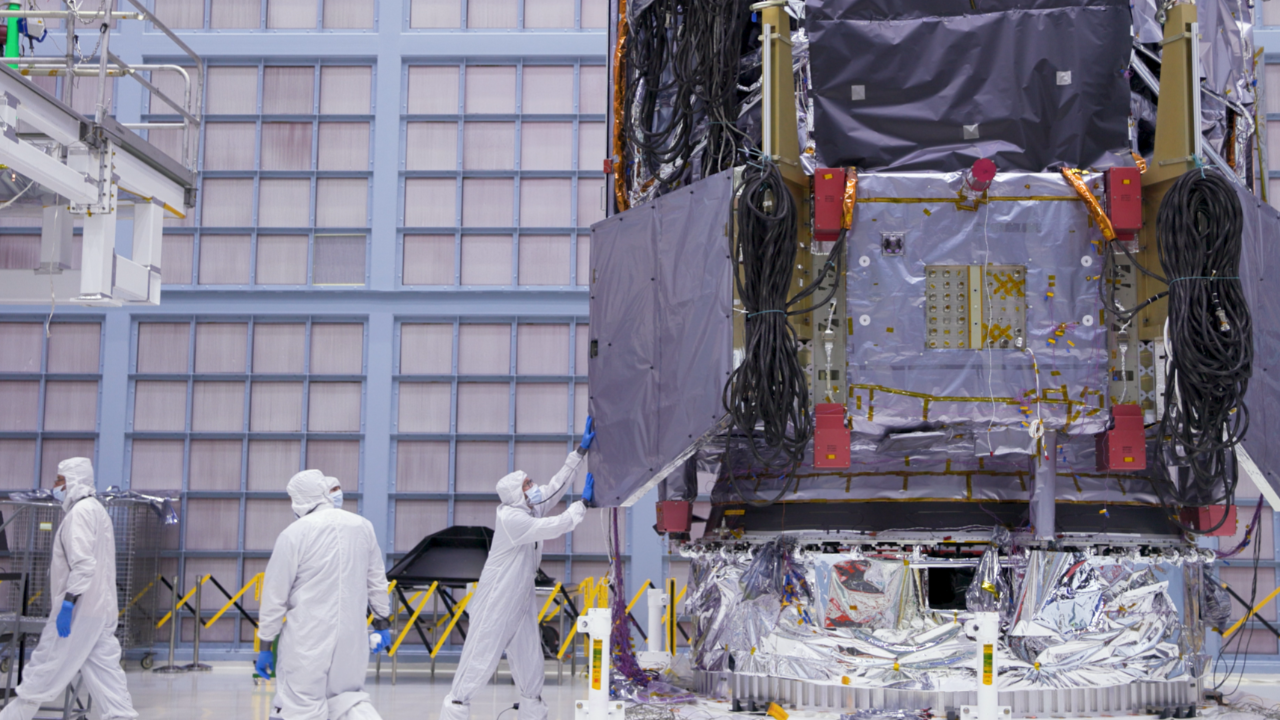
Technicians installing two sunshields onto NASA’s nearly complete Nancy Grace Roman Space Telescope in July 2025. (Image credit: NASA/Sophia Roberts)
In the radial-velocity detection technique, with which 51 Pegasi b, the first planet known to orbit a sun-like star, was found, astronomers measure the Doppler shift of a star’s subtle motion towards and away from us as it revolves around a center of mass shared with its orbiting planet(s). With astrometry, instead of measuring the radial motion of a star, astronomers measure its tangential motion on the sky as it is pulled in different directions by orbiting planets.
You may like
“So far we have less than 10 planets that have been discovered by astrometry,” said Kesseli. That’s because the measurements are difficult to make, the tangential motion being rather small. Gaia, however, is the most sensitive astrometric survey ever performed and will dramatically increase the number of exoplanets found through astrometry. However, most of these planets are likely to be gas giants, since less massive planets will have less gravitational pull on their star, leading to a much smaller tangential motion.
More sensitive to Earth-like worlds will be the Roman Space Telescope. Its 2.4-meter mirror is equipped to conduct wide-field surveys as opposed to the narrow field of view of the similarly sized but differently shaped mirror of the Hubble Space Telescope. As it gazes towards the center of our Milky Way galaxy, Roman will see countless stars in its field of view, enough to even the odds of seeing a microlensing event.
Microlensing is gravitational lensing on a small scale. We’re used to seeing the arcs and rings of light belonging to the distorted images of galaxies magnified and warped by the mass of a giant galaxy, or galaxy cluster. However, planets can also bend space enough to lens the light of background stars. The alignment has to be perfect to enable this, and that alignment is only maintained for a brief period, but by watching many millions of stars at the same time, Roman is expected to come up trumps.
“From Roman we are going to get around 2,000 microlensing planets,” said Kesseli.
Unfortunately, we will be unable to follow up on these planets once the planet and background star have moved out of alignment from our point of view. Part of the reason is that the vast majority of these planets will be very distant. “They will be far away, in the galactic bulge,” said Kesseli.
The main reason, though, is that at no point during the microlensing event do we actually see the planet, or even the star that it orbits, which will usually be too faint to be seen. All we will see is a background star brightening briefly as its light is lensed first by the foreground star and then by the planet accompanying that foreground star. The more massive the planet, the brighter the lensed star becomes, and the bigger the gap between the brightening caused by the foreground star and then by the planet, the farther out the planet must be from its star. Indeed, the technique is particularly sensitive to planets far from their star, including Earth-like planets in the habitable zone.
The microlensing events should provide some statistics of how abundant Earth-sized planets in the habitable zone of sun-like stars are. However, to learn more about such worlds, astronomers will need to find one closer to home so that they can target it with their telescopes.
“Exoplanet characterization and studying exoplanet atmospheres is what I’m most excited about,” said Kesseli. In fact, studying the atmospheres of exoplanets via a method called transit spectroscopy is Kesseli’s specialty. With this method, a telescope such as the JWST can detect a planet’s atmosphere through the way that the light from its star passes through the atmosphere when the planet is transiting. Molecules in the atmosphere absorb some of the star’s light at certain wavelengths, leaving a chemical fingerprint on the star’s spectrum.
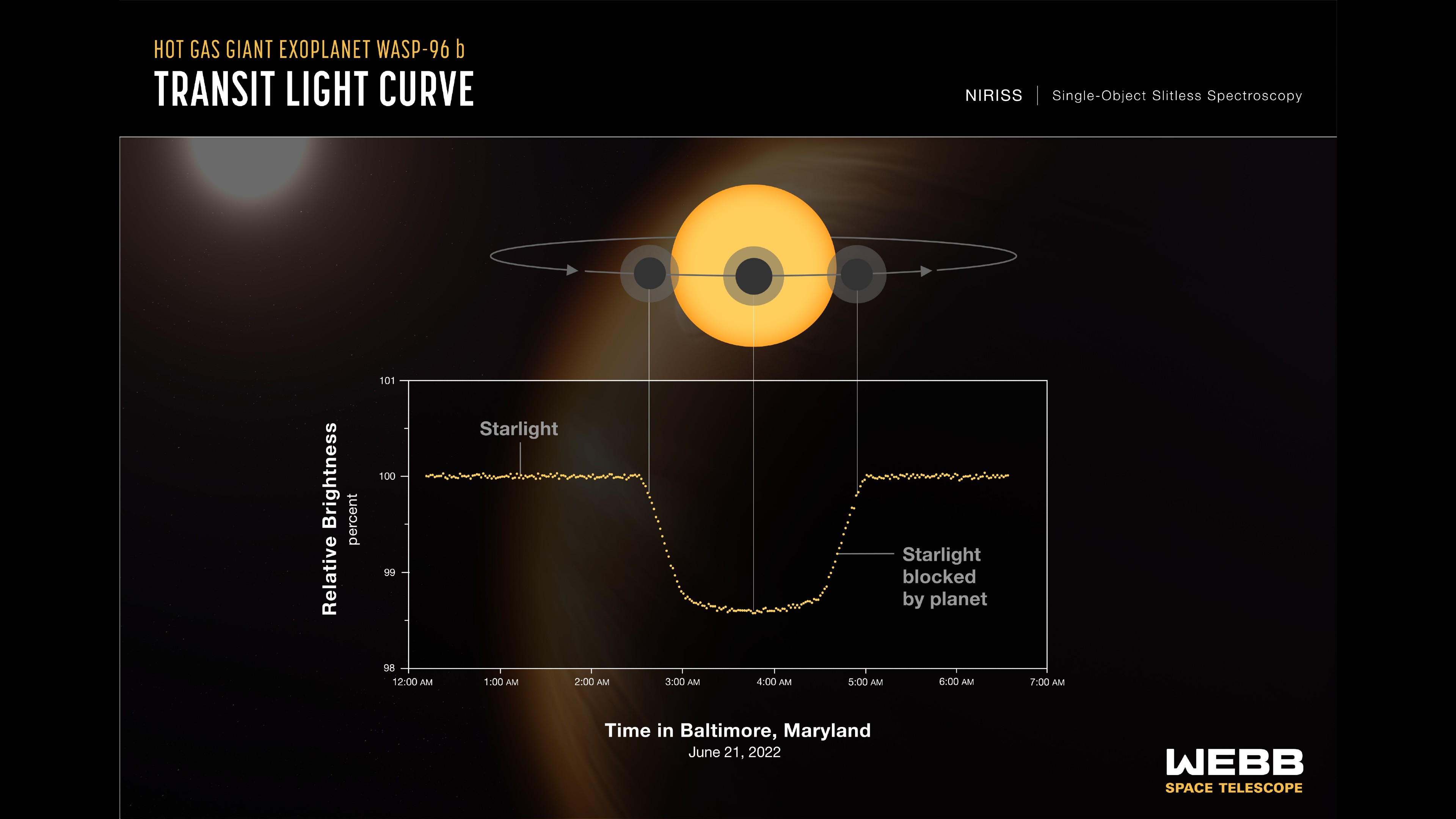
An example of an exoplanet’s light curve as it transits its star, as seen by the James Webb Space Telescope’s Near-Infrared Imager and Slitless Spectrograph (NIRISS) instrument. (Image credit: NASA, ESA, CSA, and STScI)
“In the late 2020s ARIEL [Atmosphere Remote-sensing Infrared Exoplanet Large-survey] is going to be launched, which is a European mission to do a census of exoplanet atmospheres,” Kesseli continued. “It probably won’t do Earth-like planets around sun-like stars, it will mostly be doing Neptune- and Jupiter-sized worlds, but we will get a uniform sample of a thousands planets, so we’ll be able to understand what the range in atmospheric conditions looks like, but likely not for rocky planets.”
The James Webb Space Telescope is able to study the atmosphere of some nearby habitable-zone planets, but these are orbiting red dwarf stars and not sun-like stars. Red dwarf stars are very different from our sun. They are much smaller and cooler, and their planetary systems are much closer in, leading to tidally locked worlds that always show the same hemisphere to their star. Red dwarfs are also prone to violently flaring and the outpouring of radiation from them can strip an atmosphere clean off a planet.
So far the JWST has searched for an atmosphere around a handful of these planets including some of the worlds belonging to the TRAPPIST-1 system. While no atmospheres around these rocky planets have been discovered so far, Kesseli is not down-hearted.
“So far with JWST it is inconclusive,” she said. “With more data, better techniques, more hours on targets like this, I think that we will start to have an idea about which planets likely host atmospheres and which ones don’t. But JWST is not going to be able to look at the atmosphere of an exoplanet around a sun-like star, it just doesn’t have the sensitivity for that.”
Kesseli doubts that even the forthcoming class of 30-meter scale ground-based observatories will be able to detect the atmosphere of an Earth-like planet around a sun-like star. “It’s really hard to do Earth-like planets around sun-like stars unless you’re doing direct light,” she said.
Instead, a whole new telescope, one designed specifically for the job, is required.
“If we want to see an actual Earth-like planet around a sun-like star, the best thing is going to be the Habitable Worlds Observatory, which will be launched in the 2040s,” said Kesseli.
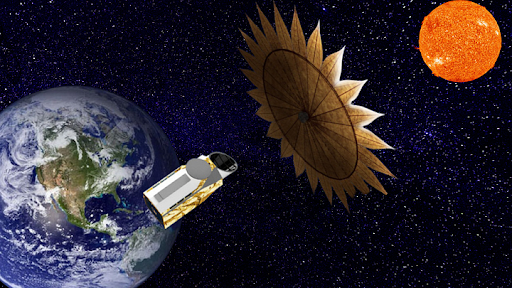
An illustration shows the Habitable Worlds Telescope in orbit around Earth with its sunshade unfolded. (Image credit: NASA/Robert Lea)
The Habitable Worlds Observatory, or HabEx for short, is NASA’s next planned space telescope, championed by the National Academy of Science’s Decadal Survey. At minimum it would feature an eight-meter telescope mirror, larger than JWST’s 6.5-meter mirror, and a coronagraph in the form of a star-shade to block out the light of the host star so that HabEx can see the planet directly. Any planet that it images will still look like a point of light, but the spectrum of that point of light could reveal whether the planet has oceans, continents, vegetation, animal life or even cities.
The first 30 years of exoplanet science focused on discovery and of finding as many planets of all different types as possible so that scientists could draw up statistics for how common each type of planet is. Think of it as a census. And while that process of discovery is going to continue, the next 30 years are going to move increasingly into characterization as we get closer to our stated goal of finding another Earth-like planet truly capable of supporting life.
Perhaps that discovery will come in about 30 years’ time courtesy of HabEx, and in turn that could set the tone for the 30 years that follow that, as we continue to reconfigure Earth’s, and our, place in the cosmos.

